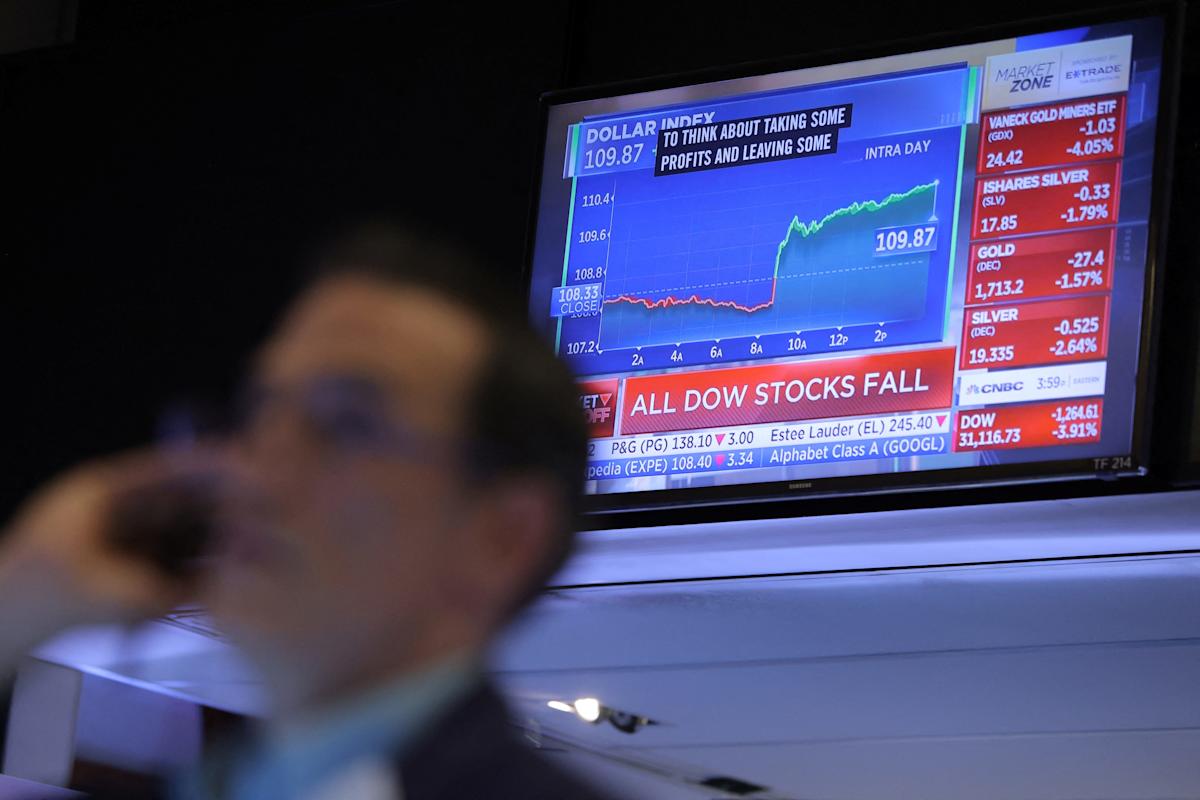More than half of low and middle-income Americans now own stocks. Here’s why.
The stock market isn’t just for rich people anymore.
More than half of low- and middle-income Americans now invest in capital markets, according to new research by the BlackRock Foundation and Commonwealth, a financial nonprofit.
And a majority of those less-affluent investors, with household incomes ranging from $30,000 to $80,000, started investing in the past 5 years.
In prior generations, owning stocks often meant you had a broker and a lot of money. Even today, the top 1% of wealthy Americans owns half of all stock, federal data shows.
But technological leaps and industry shifts have dramatically lowered the bar for entering the market. Nowadays, just about anyone can buy in.
“The entry barriers are lower,” said Timothy Flacke, CEO of Commonwealth. “You can start with 50 dollars or, in many cases, a dollar, and a smartphone. That matters.”
Stock tips used to circulate in highbrow finance magazines and subscription newsletters as well as country-club golf courses.
Today, anyone with internet access can summon an avalanche of investment advice with a simple Google search. YouTube and TikTok brim with investment influencers.
And buying stock has never been easier. Online platforms allow consumers to purchase shares without the aid of brokers or the burden of fees. For the price of a coffee, you can own a piece of the market.
“These days, no brokerages charge commissions, and many of them allow for fractional shares,” said Robert Brokamp, a senior retirement adviser and financial planning expert at The Motley Fool. “You can invest as little as 5 dollars, in some cases, and get a portion of a share of Nvidia or Microsoft.”
The report from BlackRock Foundation and Commonwealth, published Oct. 13, draws from a nationally representative survey of more than 2,750 Americans, all from households with low or moderate incomes.
It’s part of a larger initiative to study the flood of new investors into the stock market during the COVID-19 pandemic years. In 2020 and 2021 alone, individual investors opened 46 million new brokerage accounts.
The pandemic inspired many Americans to try their hand at investing: They were stuck in their homes, spending less and amassing savings, partly thanks to the federal stimulus effort.
“There were some folks who found themselves either with more cash or with more time,” Flacke said.
For middle-class Americans, stocks and real estate have served as gateways to the American Dream, rewarding a modest investment with a lifetime of capital gains.
In recent years, however, spiraling home prices and rising interest rates have pushed homeownership out of reach for many. The stock market, with no minimum investment, remains a viable alternative for building wealth.
“A lot of younger people and a lot of lower-income people have not been able to buy their way into the housing market,” said Caleb Silver, editor-in-chief of the financial journalism site Investopedia. “But they have been able to build their net worth by investing in the stock market, and by owning individual stocks.”
As a tool for building wealth, the stock market has done an admirable job of advertising itself.
The S&P 500 rose by 261% over the past decade, climbing at an annual rate of 13.6%, according to The Motley Fool.
“With a few exceptions, the market has been on an extraordinary tear over the last 10-15 years,” Brokamp said. “That just attracts more attention, and more people invest.”
In time, rising stock ownership among lower-income Americans could chip away at historic wealth disparities.
In the first quarter of 2025, the bottom 50% of Americans by net worth owned just 1% of all stocks, according to a Motley Fool analysis.
With many more lower- and middle-income consumers owning stocks, perhaps their portfolios will eventually grow.
“Americans are very good at being consumers,” Silver said. “But they’re also becoming better at being owners, owners of the companies that they’re spending money on.”
Lower-income investors have much the same aspirations as higher-income Americans, according to the BlackRock report. Survey respondents cited these as their top investment goals:
-
Retirement (37%)
-
Money for the future (35%)
-
Reducing financial stress (27%)
-
Money for children/family (27%)
The survey does not include 401(k) accounts, IRAs and other tax-favored investments. It focuses on consumers investing through standard brokerage accounts.
The survey found that newer investors are more likely to own individual stocks, rather than mutual funds or ETFs.
That could be a problem. All stocks are volatile, and individual stocks are generally more mercurial than mutual funds and ETFs, which often mirror the performance of a stock or bond index.
“My personal preference is for people to start with index funds and then move into individual stocks,” Brokamp said. “But it looks like the opposite is happening now.”
The survey suggests new investors “are really hungry for information about how to diversify” their investments, said Claire Chamberlain, President of The BlackRock Foundation. “One of the things the industry can do is meet people where they are.”
The financial services industry could help new investors, for example, by encouraging more households to open emergency savings accounts, Chamberlain said.
A recent analysis by Investopedia found that the average American family should have at least $35,000 in emergency savings to cover unexpected expenses.
Emergency savings deliver financial security. Without savings, a lower-income family is more apt to cash out an investment account if a car breaks down or the roof leaks.
“One of the things that this survey revealed is the importance of having emergency savings,” Chamberlain said, “to support the investor’s ability to stay the course.”
This article originally appeared on USA TODAY: More than half of lower and middle-income Americans now own stocks



Leave a Comment
Your email address will not be published. Required fields are marked *